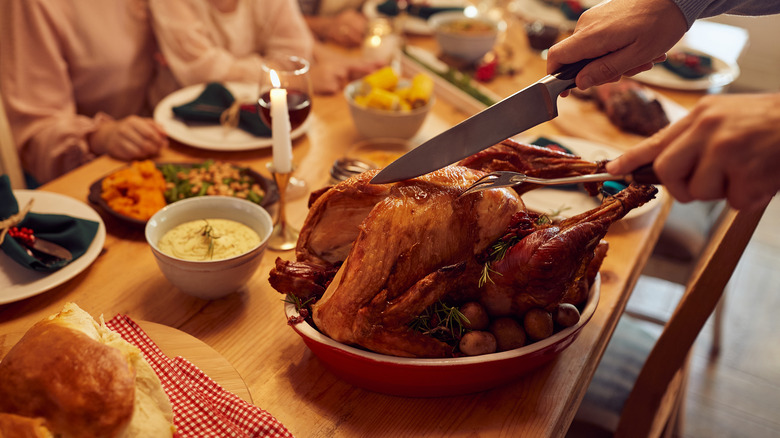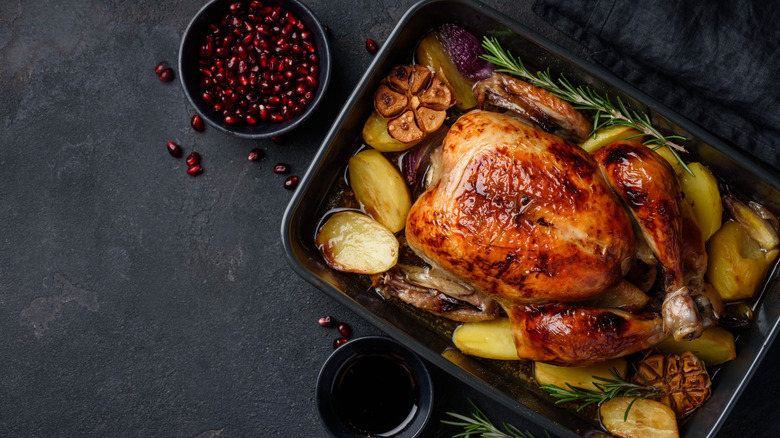The Slicing Mistake You Could Be Making When Carving Turkey
Thanksgiving is right around the corner, and you may already be dreaming of your favorite seasonal sides, like green bean casserole or mashed potatoes, and the main course of crispy, juicy turkey. However you cook your bird, whether you brave the deep-fryer or meticulously care for it for hours in the oven, carving it is one of the most important aspects to get right this holiday season. Yes, there is a right way to carve a turkey, and it involves some knowledge and skill. Having a rough idea of which anatomical parts to slice into first is essential, but how you cut may be more important than where.
While handy gadgets like electric carving knives may seem convenient, it may be best to avoid them because the forceful sawing motion the blades produce is likely damaging that moist and delicate turkey meat. As Alton Brown says, all you need for carving a turkey is a sharp knife and tongs.
Slice, don't saw
According to Food & Wine, one of the biggest carving tips to remember during the holiday season is avoiding a sawing motion (with any knife) when cutting into your Thanksgiving bird. This technique is abrasive to the muscle fibers and will harm the meat by undesirably shredding it. When this happens, it allows the turkey's juices to spill out, leading to dry cuts. And, as we're sure you know, dining on dry turkey is not an enjoyable experience.
An easy way to avoid this is by making sure your knife is sharp. According to The New York Times, using a dull blade can encourage the handler to saw into the meat, so make sure you hone the cutting edge before using it. They suggest using a sharp knife that's 5 to 6 inches to slice straight through the bird. However, some sources recommend using a longer knife for carving. As long as your knife is sharp and comfortable in your hand, you should feel confident to dish out your perfectly-cooked turkey to your family this Thanksgiving.

